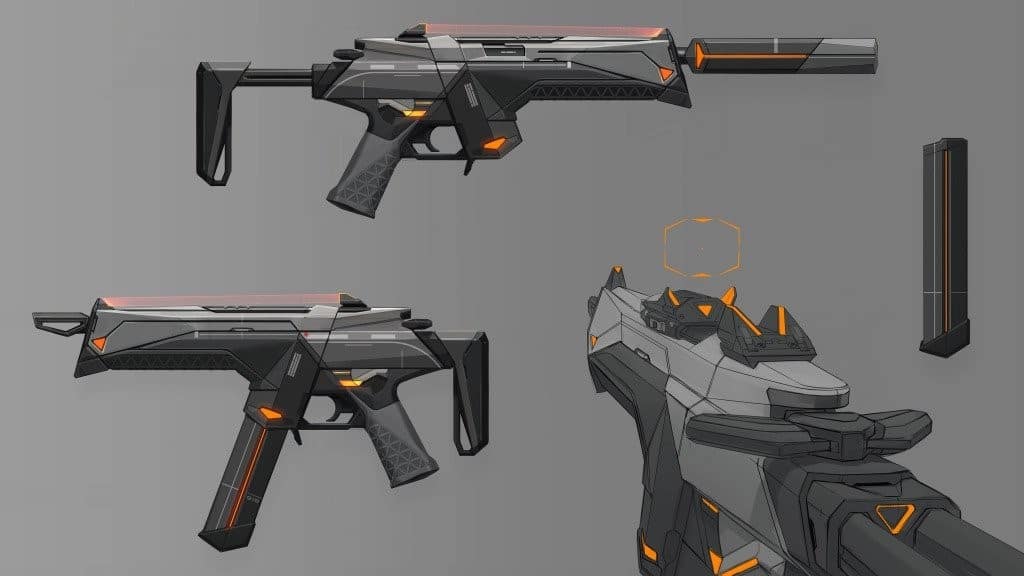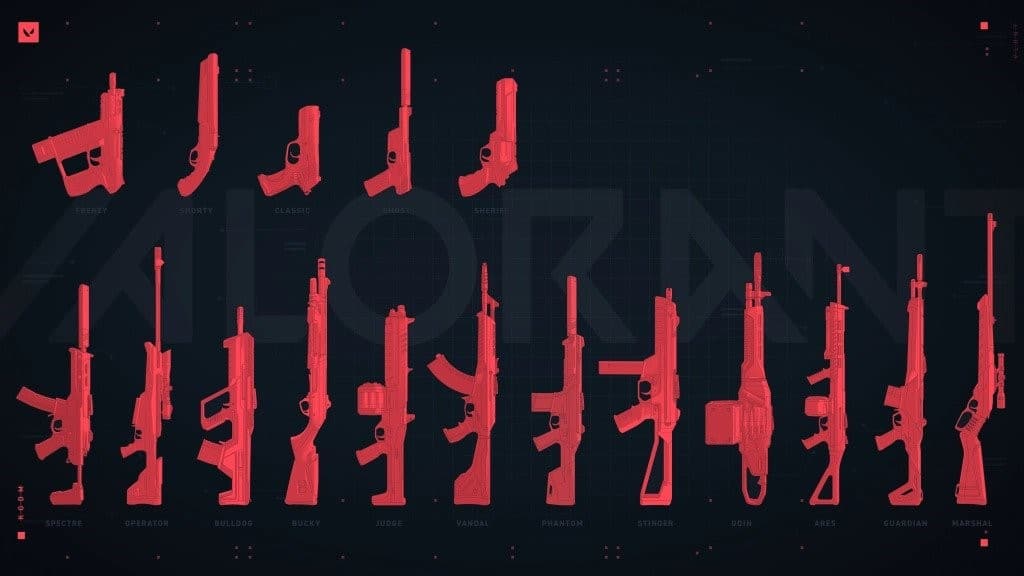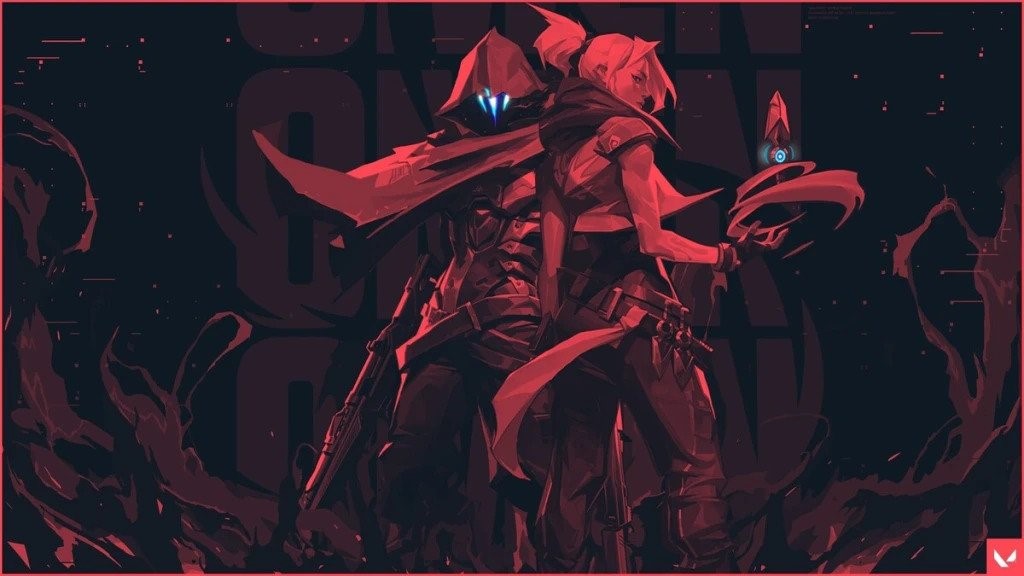Summary
Let’s start at the Shooting Range

When you first boot up the game, you will have the option to go through a quick tutorial. All fun and games, but you want to get good at least to a comfortable extent, right? While real matches can make that happen, they should be accompanied by frequent visits to the Range where you can practice agent abilities and your aim with different weapons. Even better if you have a couple of friends to play with on a regular basis, you can work together and make the learning process more enjoyable.
Testing weapons and finding the ones you feel are easier to use is one way to grasp the game’s mechanics. You can track your score and check out all the maps available to learn what angles are best to shoot from. For instance, if you want to properly move around the map, you will need to learn how to peek at corners – usually, those further from the corner would get an opportunity to see the opponent first.
Likewise, you will want to keep your crosshair at headshot level when looking at spots where opponents are likely to appear. Reaction time is key – your aim doesn’t have to be perfect at first, but you will see that the less you have to move your mouse before firing, the greater your chance is to hit and kill an enemy.
A beginning with no end

Valorant has its own unique set of rules to cook up the most efficient combat formula. You want to make sure you’re always up to speed with the latest changes by giving each update’s patch notes a read – they will explain what tweaks to weapons, agent abilities, and other game mechanics have been made.
One major change that is rocking the way the game is played is running and gunning – it was a normal occurrence, as in other FPS titles, just until recently, but now the accuracy is promoted by players’ ability to alternate at a moment’s notice between moving to reposition and shooting to hit the target. Coupled with the utility kit of each agent, things can get pretty complicated quickly.
The basics of any game will always be the place where you can improve the most, if you want to become a true master.
Another, much easier way to leveling up your skills at the game is to find a coach and practice with them. This allows you to rank higher and go into the upper echelons where you will find greater challenges that will put your skills to the test.
A cheaper way of learning that can be just as effective is watching streamers and full tournaments… while taking notes. Yes, you read that right – taking notes. Just watching gets you somewhere, but your memory lanes are limited and traffic is high.
Settings matter

You may be coming from a place where you know that pro players use low mouse sensitivity settings because that helps them be more accurate with their movements. That’s not to say that there are no pros to setting your sensitivity high.
When you are just getting started, you should set a more realistic goal. Begin with higher sensitivity and go from there. When you don’t overshoot a target and can adjust your aim and hit your target where you want 100/100 times, decrease the sensitivity and move your arm from the shoulder to maximize each movement. Until you get used to this, calling the process slow and painful is not far from the truth. Thing is you get better at something by doing it over and over again.
It goes without saying, but playing at higher graphics settings is more taxing of your hardware and might reduce performance, so maybe lowering down those sliders is a good idea. Valorant is a well-optimized game that runs on almost any rig from the last decade, but it’s best to play at solid 60 fps, for which you’ll need a more recent and capable machine to run it on.
Weapons and armor

When you head straight into a fight without any kind of protection, you are asking for elimination early on. Granted, even pro players rely on light armor in more or less any situation. To preserve your precious 100 hit points, armor is arguably even more important than weapons – you can be proficient with any gun, but if your opponent is just as good or even better, you will have a hard time stopping them from hitting you when a shootout is on the loose.
Most of the time, you will want your team to be the first to get to a specific location on the map at the start of a match, so you can take control over the area. The fastest way to move is to equip your knife when running. You don’t want to jump out of a corner either, or at any point during combat, really – your weapon sway and recoil become even harder to control than usual if you do so. Instead, crouching is a more reliable option that will require enemies to lower their crosshair below headshot level in order to get you – a few milliseconds that can make the difference in a match.
Staying calm is the other crucial factor that often grants players the reward of clutching out a narrow one versus three or four scenario. Inhale, exhale. Breathe deep and focus on getting there, step by step. With time, you will be able to see through other teams’ tactics and predict their movement patterns. But if you are not cool-headed, you won’t be able to make use of every opportunity that presents to you during a close game, or any type of game really.
Spending Creds is a breeze

As an FPS relying heavily on players’ buying economy, you are expected to know when to buy weapons and when to keep your coins in your pocket. Simply put, don’t use all the credits you get as soon as you get them. Wait to see how much your team has in total and split the funds if anyone doesn’t have enough to gear up properly.
Armor often comes first, followed by your weapon and any additional items you may want to utilize depending on your squad’s approach. As a match progresses, there are rounds where you ‘go eco’ and only buy protection and a pistol, there are half-buy rounds with semi-heavy armors and weapons, and there are full-buy rounds where you go all-out and get the best gear money can buy.
Here comes again the advantage of having practiced with all the weapons Valorant has to offer. No matter the round, if you have used the weapon long enough, you will be familiar with its recoil, spraying pattern, and its compatibility with your agent’s abilities.
Know your agents

That’s right, your agent is an extension of yourself in the virtual world, and their abilities are intimately woven into the structure of this tactical shooter. Seeing is believing, right? Just look at any professional player and how they go around the map. They don’t use their abilities right away if their purpose isn’t scouting, and even initiating fights can happen after a few dozen seconds have passed. Your abilities are there to aid you in combat.
They are four classes of agents in Valorant:
- Controllers – They excel at area control by prompting opponents to reposition in order to avoid damage, often forcing them to expose themselves.
- Duelists – The shiny stars of the bunch, with flashy abilities that allow them to be in the eye of the storm of bullets and create a path for their teammates.
- Initiators – Just as the name suggests, they are there to set up the fight by pushing defenders and covering angles.
- Sentinels – The defensive line that looks over flanks and takes care of areas that need to be locked down, be it on a defender or an attacker round.
Not all agents’ abilities blend naturally into each other but those who do are a cut above the rest. Try them all out on the training range while looking at gameplay and attempting to perform some of the combinations of abilities and weapon use yourself. The gun you carry does not necessarily change the way you use your abilities, but it can have an impact.
The best Valorant agents for beginners

Controller – Omen: If you are itching to get a kick out of confused enemies, then Omen is the right agent for you. His smokes are easily deployed with top-tier precision and he can even place them on different elevations with the help of a handy arrow. On top of that, they recharge and allow you to use them without worrying about credits.
The best part – he can blind his opponents with Paranoia and even teleport short-distance with Shadow Walk. All of this allows beginner players to try out various strategies while blinding opponents, zoning them out while teleporting from a hiding spot to another, and surprising them with an ultimate that can be canceled anytime.
Duelists – Jett and Reyna: For those who like speed, Jett is the way to go. She can evade opponent abilities and surprise them at angles from the ground or up high in the sky using Tailwind and Updraft. This also opens a chance to practice the placement of the cursor at headshot level due to the elevation change. With Cloudburst, she can also provide cover, and Blade Storm, her ultimate, is the killer move that deals enough damage to take out opponents in a single precise shot.
A basic but effective utility kit is that of Reyna – it does not require a long time to get used to either, which makes it a great choice for anyone looking to get started. The Leer flash is breakable, but it can be the key to winning if the timing is right. For instance, peeking just before it is activated can prompt enemies to retreat, get distracted by firing at the eye, or attempt to duel it out blind. Even if the eye is broken, enemy key positions are revealed, which is crucial to Valorant’s tactical nature.
What’s more, Reyna’s Devour charges also offer options depending on the situation at hand – you can either heal or retreat after snatching a win in a duel. Those who are learning the ropes of pushing and peeking can safely heal after being in the heat of the action for long enough. With Reyna’s ultimate, each kill grants a bonus, which can further motivate you to keep going strong.
Sentinel – Sage: Valorant’s match pace can become chaotic really quickly and this often thrusts new players into confusion. With Sage, it is much more feasible of a task to slow down the pace and stop rushing opponents. The barrier wall and slow orbs do just that, allowing a moment of peace to hide or make a team rotation. Her wall can also be used as a peeking tool by jumping on it while it rises, and in tight spaces like corridors, it can surprise enemies with blocked vision. Passive playstyles promote the use of her heal whilst behind teammates – then, the only thing to worry about is getting right behind an ally and losing your wide viewing angle, making you vulnerable without your weapon ready to shoot.
Initiator – KAY/O: The fresh addition to Valorant’s roster is perhaps the most fun to play around with at the very start. He uses his suppression knife to reveal foe locations and have them choose between pushing with no usable abilities or wait it out and cause themselves a delay. His flash and grenade are great for creating favorable conditions for opponents to risk it and switch positions. And of course, his ultimate that makes him an emitter of suppression aura while moving and putting a cap on enemies’ abilities as long as they are around him.
The best Valorant weapons for beginners

Assault Rifle – Phantom: Do you go for the Vandal or Phantom? Ah, the eternal rivalry. While the Vandal may be preferred by some, a better alternative for those who are looking to get used to the game is the Phantom. It comes with a built-in silencer and improved accuracy, making it effective in engagements at any range. It also eliminates the spray and pray situation that other guns may put you in, and that is well worth the price if you want to get good at pop shots from a distance.
Rifle – Spectre: The Spectre’s capabilities to meltdown opponents at close range with agents that are mobile enough, as is Jett, for example, make it an extremely potent weapon. Its fire rate is incredibly fast and does not leave room for breathing when it starts shooting. ADS (aiming down sights) increases accuracy and makes it the weapon for run-and-gun practice any newcomer could wish for.
Sidearm – Ghost: No sidearm is as silent and useful as the Ghost when it comes to learning precision-play and headshot tricks in a short time. With its headshot damage from within 30 meters, it can pick out enemies with heavier weapons and keep them rolling in a row. What makes it so valuable is that it is also affordable and is great for most types of gunfights.
Shotgun – Judge: Just shoot. That’s all you have to do with this one. No need to be pinpoint perfect, just get close enough and you can smack ‘em good. Especially when it comes to the attackers, this is a great weapon for rushing in. It is fast enough to make those who approach you regret it.
Sniper – Marshall: The Operator is the most expensive in the game, and it can give you a feeling of greatness like no other weapon – granted, you if have impressive aiming skills. At the other end of the spectrum, the Marshall does not require you to be a pro at sniping, but it puts your skills to the test just as much. It is the Scout of Valorant, much cheaper, with shorter reload times, and well capable of holding a position from a high vantage point, albeit at the expense of lighter shots. You can start slow with 90 percent body shots and slowly go up to gain confidence at headshots as well and go in Operator territory when you feel ready.
So now what, Captain?

Working together – what we mentioned at the very start – is the key to making it in Valorant. Solo players can get up to a certain level, but the real top of the crop and depth of the game is visible only through the lens of cooperation.
To put it simply, your victory and your loss and not only yours, they are your team’s. In competitive play, good communication with your team requires what is known as “shot calling” – navigating your team, calling out the location of enemies, or other vital information that can allow your side to turn the tide of a round. Communicating about the ability an enemy just used, coordinating your own utility usage, giving each other space to perform, even if it doesn’t always lead to a fantastic outcome, and anything else that will allow you to keep your team morale high is critical, even when playing with complete strangers for a single match.
While on the surface communicating effectively might seem a menial task, it’s not that easy. Taking your time to explain what happened can lead to a loss if you are not careful, and even when you are, you still need to pick your words just as you would pick what piece of information matters the most.
Arguing with squad members can not only ruin your match, but your day as well, and nobody wants to exit a game in a worse mood than they entered it, right? It may be the case that everyone except you excels at team communication, but if you try long and hard enough, you can nail it too.
So, are ready to climb the ranks and become a Radiant? Follow this guide, never stop learning and challenging yourself – and someday you’ll get there.






